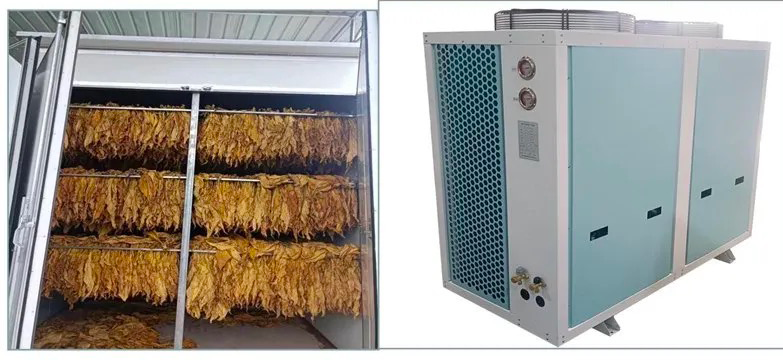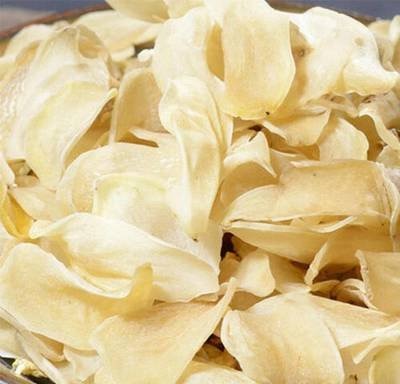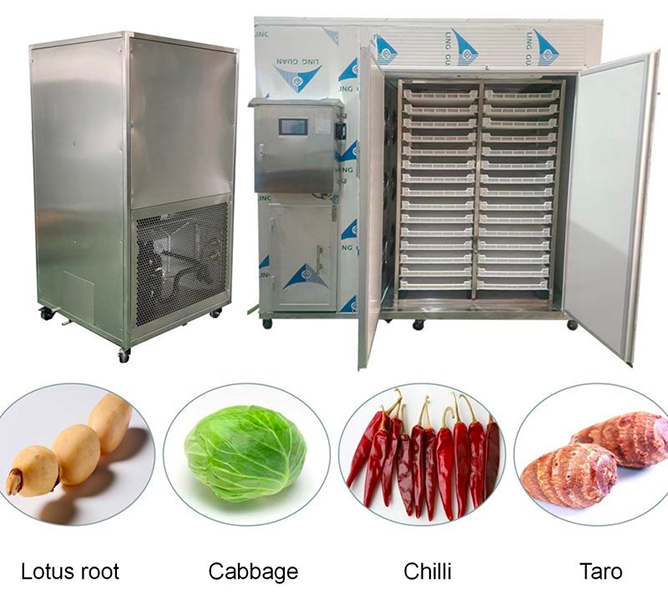
Content Menu
● Understanding Heat Pump Technology
>> What is a Heat Pump?
>> How Does a Heat Pump Work in Food Drying?
● Environmental Impact of Heat Pump Dryers
>> Energy Efficiency
>> Use of Renewable Energy
● Advantages of Using Heat Pumps in Food Drying
>> Lower Operating Costs
>> Improved Product Quality
>> Flexibility and Versatility
● Challenges of Heat Pump Dryers
>> Initial Investment
>> Maintenance Requirements
● Future Trends in Food Drying Technology
● Innovative Techniques in Heat Pump Drying
● Sustainability Initiatives in Heat Pump Drying
● Comparison with Conventional Drying Methods
● Applications of Heat Pump Dryers in Food Industry
● Conclusion
● FAQ
>> 1. What are the benefits of using a heat pump dryer?
>> 2. How does a heat pump dryer compare to traditional dryers?
>> 3. Are there any downsides to using heat pump dryers?
>> 4. Can heat pump dryers be powered by renewable energy?
>> 5. What types of foods can be dried using heat pump technology?
Food drying is an essential process in the food industry, preserving nutrients and extending shelf life. As technology advances, heat pump dryers have emerged as a popular choice for both commercial and home use. This article explores the environmental friendliness of heat pumps in food dryers, their operational efficiency, and their impact on energy consumption.

Understanding Heat Pump Technology
What is a Heat Pump?
A heat pump is a device that transfers heat from one place to another using a refrigeration cycle. It can extract heat from the air or ground and use it to dry food products. Unlike traditional dryers that generate heat through combustion or electric resistance, heat pumps recycle energy, making them more efficient.
How Does a Heat Pump Work in Food Drying?
In food drying applications, a heat pump works by:
1. Extracting Moisture: The pump draws in moist air from the drying chamber.
2. Condensing Moisture: The moisture is condensed into water, which is then removed.
3. Recycling Heat: The remaining warm air is reheated and recirculated back into the chamber.
This process allows for lower drying temperatures while maintaining high efficiency, which is particularly beneficial for sensitive food products.
Environmental Impact of Heat Pump Dryers
Energy Efficiency
Heat pump dryers are known for their energy efficiency. They can reduce energy consumption by up to 50% compared to conventional drying methods. This significant reduction in energy use translates to lower greenhouse gas emissions, making them an environmentally friendly option.
Use of Renewable Energy
Many heat pump systems can be powered by renewable energy sources such as solar or wind power. This capability further enhances their sustainability profile, as it reduces reliance on fossil fuels.
Advantages of Using Heat Pumps in Food Drying
Lower Operating Costs
The high efficiency of heat pump dryers leads to reduced operating costs. Although the initial investment may be higher than traditional dryers, the long-term savings on energy bills can be substantial.
Improved Product Quality
Heat pump dryers operate at lower temperatures, which helps preserve the nutritional content and flavor of food products. This quality retention is particularly important for fruits, vegetables, and herbs.
Flexibility and Versatility
Heat pump technology can be adapted for various food types and drying processes. Whether it's fruits, vegetables, or meats, heat pumps provide consistent results across different products.

Challenges of Heat Pump Dryers
Initial Investment
While heat pump dryers offer long-term savings, the upfront cost can be a barrier for some businesses. However, government incentives and financing options may help mitigate this issue.
Maintenance Requirements
Heat pumps require regular maintenance to ensure optimal performance. This includes cleaning filters and checking refrigerant levels. Proper maintenance can extend the lifespan of the equipment and maintain its efficiency.
Future Trends in Food Drying Technology
The future of food drying technology looks promising with advancements in heat pump systems. Innovations such as smart controls and IoT integration are expected to enhance efficiency further and provide real-time monitoring capabilities.
Innovative Techniques in Heat Pump Drying
Recent advancements in heat pump drying technology have led to innovative techniques that improve efficiency and product quality:
- Electrical Impedance Tomography (EIT): This technique visualizes moisture distributions within food samples using electrical currents, allowing for real-time feedback during the drying process.
- Vacuum-Microwave Drying: By combining vacuum conditions with microwave heating, this method significantly reduces drying time while preserving product quality.
- Radio Frequency (RF) Drying: Utilizing electromagnetic waves to heat food products accelerates dehydration while maintaining flavor and nutrients.
- Freeze-Drying: Although more costly, this method removes water through sublimation while preserving the structure and nutrients of food products.
These techniques not only enhance the drying process but also align with consumer demands for healthier and more convenient food options.
Sustainability Initiatives in Heat Pump Drying
As environmental concerns grow, sustainability initiatives in heat pump drying are becoming increasingly important:
- Renewable Energy Integration: Many systems now incorporate solar panels or wind turbines to power operations sustainably.
- Waste Heat Recovery Systems: These systems capture excess heat generated during drying processes to be reused, minimizing energy waste.
- Smart Control Systems: Automation technologies allow for precise control over temperature and humidity levels, optimizing energy use and reducing costs.
These initiatives contribute to lowering the carbon footprint of food processing operations while improving overall efficiency.
Comparison with Conventional Drying Methods
When comparing heat pump dryers with conventional methods such as hot air or freeze-drying systems:
| Feature | Heat Pump Dryers | Conventional Dryers |
| Energy Efficiency | Up to 50% less energy consumption | Higher energy consumption |
| Temperature Control | Operates at lower temperatures | Higher temperatures can degrade quality |
| Product Quality | Preserves nutrients and flavors | Often leads to quality loss |
| Environmental Impact | Lower greenhouse gas emissions | Higher emissions due to energy use |
Heat pump dryers demonstrate superior performance across these critical metrics, making them a preferred choice for modern food processing needs.
Applications of Heat Pump Dryers in Food Industry
Heat pump dryers are versatile tools used across various sectors within the food industry:
- Fruits and Vegetables: Ideal for drying sensitive produce like berries or leafy greens without compromising nutritional value.
- Herbs: Retains essential oils and flavors better than traditional methods.
- Meats: Effective for jerky production while ensuring safety standards are met through proper moisture control.
- Grains: Can be used to reduce moisture content in grains before storage, preventing spoilage.
These applications highlight the adaptability of heat pump technology across different food categories.
Conclusion
In conclusion, heat pumps in dryers represent an environmentally friendly option for food drying processes. Their energy efficiency, ability to utilize renewable resources, and positive impact on product quality make them an attractive choice for manufacturers and consumers alike. As technology continues to evolve with innovations like smart controls and advanced drying techniques, we can expect even greater improvements in sustainability within the food processing industry.

FAQ
1. What are the benefits of using a heat pump dryer?
Heat pump dryers offer several benefits including energy efficiency, lower operating costs, improved product quality, and versatility across different food types.
2. How does a heat pump dryer compare to traditional dryers?
Heat pump dryers are more energy-efficient than traditional dryers, often reducing energy consumption by up to 50%. They also operate at lower temperatures which helps preserve the quality of food products.
3. Are there any downsides to using heat pump dryers?
The main downsides include higher initial investment costs and maintenance requirements. However, these can be offset by long-term savings on energy bills.
4. Can heat pump dryers be powered by renewable energy?
Yes, many heat pump systems can be integrated with renewable energy sources such as solar or wind power, enhancing their sustainability profile.
5. What types of foods can be dried using heat pump technology?
Heat pump technology is versatile and can be used to dry various foods including fruits, vegetables, herbs, and meats while maintaining their nutritional quality.












